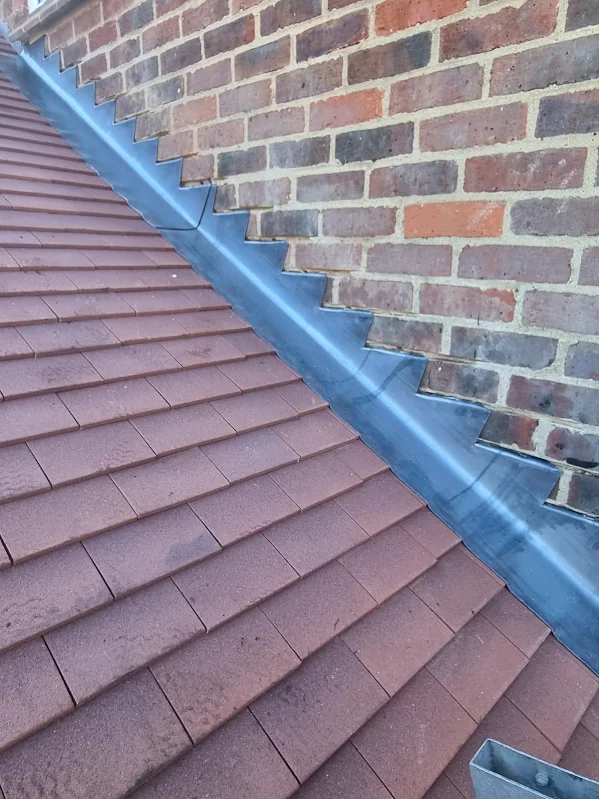+44 7853 968135
What is the lifespan of a new roof?
Understanding the lifespan of a new roof represents one of the most crucial considerations for UK homeowners planning their long-term property investments. The longevity of your roof depends on multiple interconnected factors, from the materials you choose to the quality of installation and ongoing maintenance practices you implement.
Modern roofing materials and installation techniques have significantly extended roof lifespans compared to historical standards, yet the British climate presents unique challenges that can impact durability. This comprehensive guide examines every aspect of roof longevity to help you make informed decisions about your property’s protection.
What is the average life of a new roof?
Most new roofs installed in the UK today can be expected to last between 20 to 100 years, depending primarily on the materials selected and installation quality. Clay tiles, which remain popular across Britain, typically provide 50 to 100 years of reliable service when properly maintained, whilst concrete tiles offer 30 to 50 years of protection.
Slate roofing, historically favoured in many British regions, represents the gold standard for longevity with properly installed Welsh slate lasting well over 100 years. However, the substantial upfront investment means many homeowners opt for more affordable alternatives like composite materials, which generally provide 25 to 40 years of reliable performance whilst offering excellent value for money.
| Roofing Material | Average Lifespan (Years) | Climate Suitability for UK |
|---|---|---|
| Welsh Slate | 100+ | Excellent |
| Clay Tiles | 50-100 | Excellent |
| Concrete Tiles | 30-50 | Very Good |
| Composite Shingles | 25-40 | Good |
| Metal Roofing | 40-70 | Very Good |
| Felt/Bitumen | 15-25 | Fair |
Need some Support with your Roof Replacements? Speak with a member of our Professional Roof Replacement Team here

How long will a new roof last?
A new roof’s actual lifespan extends beyond manufacturer specifications when you consider real-world factors affecting durability. Professional installation by certified roofers typically adds 10 to 20 years to expected lifespan compared to substandard workmanship, particularly regarding proper ventilation and weatherproofing details.
The specific location within the UK significantly influences longevity expectations, with coastal properties facing salt air corrosion whilst inland areas deal with temperature fluctuations and heavy rainfall. Regular maintenance schedules, including annual inspections and prompt repairs, can extend your roof’s functional life by 25 to 30 percent beyond baseline expectations, making maintenance investments highly cost-effective over time.
How often should you need to replace a roof?
Most UK homeowners should plan for roof replacement every 30 to 50 years when using standard materials, though premium options can extend this timeline significantly. The replacement frequency depends heavily on your chosen materials’ quality grade, with builder-grade options requiring more frequent renewal compared to premium alternatives that justify higher initial costs through extended service life.
Proactive replacement scheduling prevents emergency situations that typically cost 40 to 60 percent more than planned renovations. Early replacement indicators include multiple leak areas, widespread granule loss on shingles, or structural sagging that compromises the roof’s protective integrity, making monitoring these warning signs essential for budget planning.
How to tell the age of a roof?
Determining your roof’s age requires examining multiple indicators that reveal installation timeframes and remaining lifespan expectations. Building records and planning applications, available through your local council, often contain installation dates for major roofing work, providing definitive age confirmation for insurance and maintenance planning purposes.
Visual inspection techniques can reveal age-related deterioration patterns, including colour fading, moss growth patterns, and material weathering characteristics that develop predictably over time. Professional roof surveys, recommended every five years for roofs over 15 years old, provide detailed age assessments alongside condition reports that help prioritise maintenance investments and replacement planning.
| Age Indicators | 0-10 Years | 10-20 Years | 20+ Years |
|---|---|---|---|
| Material Colour | Vibrant, uniform | Slight fading | Significant weathering |
| Moss/Algae Growth | Minimal | Moderate patches | Extensive coverage |
| Granule Loss | None | Light shedding | Heavy loss |
| Structural Movement | None | Minor settling | Visible sagging |
| Repair History | Original condition | Minor maintenance | Multiple repairs |
Professional roofers can also identify specific manufacturing dates on materials like tiles and slates, as many carry date stamps or batch numbers that reveal precise installation periods. The Building Regulations guidance provides frameworks for understanding compliance standards that have evolved over decades, helping determine whether older roofs meet current safety and efficiency requirements.
Additionally, the Planning Portal offers resources for researching property modification histories that might include roofing work records, particularly useful for properties with complex renovation histories or multiple ownership changes.
Understanding your new roof’s complete lifespan potential
Your new roof’s lifespan represents a long-term investment that requires careful consideration of multiple interconnected factors beyond simple material selection. The combination of quality materials, professional installation, and consistent maintenance creates the foundation for maximising your roof’s protective capabilities whilst minimising lifetime costs through strategic planning and proactive care.
Modern roofing technology has revolutionised lifespan expectations, with advanced materials and installation techniques offering unprecedented durability for UK climate conditions. Understanding these capabilities helps homeowners make informed decisions that balance upfront costs against long-term value, ensuring optimal protection for decades to come.
The investment in a quality roof system pays dividends through reduced maintenance costs, improved energy efficiency, and enhanced property values that compound over time. Strategic planning around roof replacement timing allows homeowners to take advantage of favourable market conditions whilst avoiding emergency situations that compromise both quality and budget considerations.
Key factors for maximising your new roof’s lifespan include:
Need Help with Replacing your Roof? Talk to one of our Roof Replacement Experts today!
What is the lifespan of a new roof: Frequently Asked Questions
Material quality and professional installation represent the two most critical factors, with proper ventilation and regular maintenance following closely behind. UK climate conditions, including heavy rainfall and temperature fluctuations, require specific installation techniques that certified roofers understand thoroughly.
The UK’s wet climate favours materials like slate and clay tiles that handle moisture effectively, whilst composite materials may deteriorate faster in coastal areas due to salt exposure. Proper drainage and ventilation become essential for all materials to prevent moisture-related damage that can halve expected lifespans.
Multiple leak points, widespread material deterioration, or structural sagging typically indicate replacement needs rather than repair solutions. When repair costs exceed 30% of replacement costs, or when roofs approach 75% of their expected lifespan, replacement usually offers better long-term value.
Most UK homeowners should budget £200-500 annually for professional maintenance, depending on roof size and complexity. This investment typically extends roof lifespan by 25-30% compared to reactive maintenance approaches, making regular care highly cost-effective.
Basic age indicators like material weathering and colour changes provide rough estimates, but professional surveys offer precise assessments including structural condition and remaining lifespan projections. Visual inspection should complement rather than replace professional evaluation for accuracy.
Installation certificates, material warranties, and maintenance records create essential documentation for insurance claims and future work planning. Building control certificates and planning permissions should also be preserved as they demonstrate compliance with current regulations.
Modern composite materials offer improved weather resistance and lighter weight compared to traditional options, though premium traditional materials like Welsh slate still provide superior longevity. The choice often balances upfront costs against expected service life and aesthetic preferences.
Steeper roof pitches typically shed water more effectively, reducing moisture exposure that can shorten material lifespan significantly. However, steeper pitches also face increased wind exposure, requiring stronger installation techniques to maintain structural integrity over time.
Extended warranties provide valuable protection for premium materials, particularly when covering both materials and installation workmanship together. Review warranty terms carefully as some exclude damage from inadequate maintenance or extreme weather events common in the UK.
Proper insulation and ventilation systems regulate temperature extremes that can stress roofing materials, potentially extending lifespan by 15-20%. Energy-efficient roofing systems also reduce heating costs throughout the roof’s service life, improving overall investment returns.
Ask about specific experience with your chosen materials, maintenance recommendations, and realistic lifespan projections based on local climate conditions. Request references from projects completed 10+ years ago to verify long-term performance claims.
Properly installed solar panels can actually protect underlying roofing materials from UV exposure, potentially extending lifespan in some cases. However, inadequate installation can create penetration points that compromise weather protection, making professional installation essential.
Most insurance policies require regular maintenance documentation and may offer premium reductions for newer roofs or premium materials. Understanding your policy’s coverage limitations regarding age-related deterioration helps plan replacement timing to maintain full protection.
Spring and autumn inspections catch weather-related damage early, whilst winter preparations including gutter cleaning and loose material securing prevent storm damage. Summer periods offer optimal conditions for major maintenance work that extends overall lifespan significantly.

